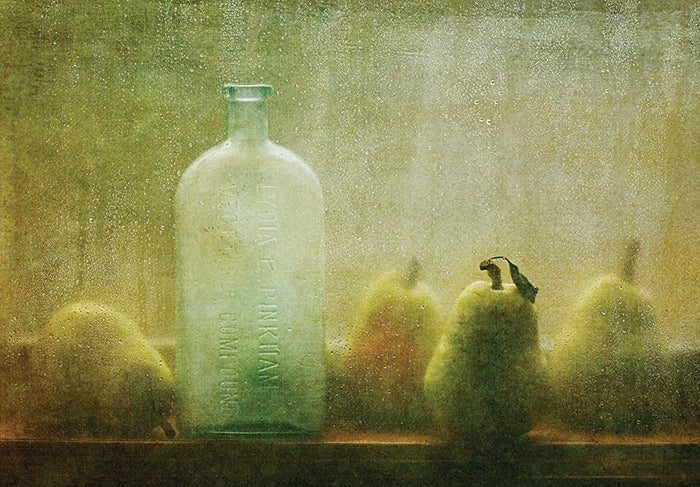You Can Do It: Shoot Evocative Still Life Photos
For more of Weiss’s decorative and fine-art still lifes, go to amy-weiss.artistwebsites.com

For Amy Weiss, an American fine-art photographer living and working in Melbourne, Australia, the best still-life images create a strong feeling or mood. For this photo, the feeling is clearly expressed in her title: “Rainy Days.”
“I love them. I love the moodi-ness, sounds, soft light, and cozy feelings I associate with rainy days. I tried to put all that in this image, which ironically, wasn’t taken on a rainy day at all,” says the photographer.
Instead, Weiss waited for an overcast day when the light was soft and free of deep shadows or overly bright highlights. She placed her subjects on a living room window sill and hung a thin sheet of transparent plastic in front of them. To recreate the feeling of a rainy afternoon, she sprayed a mist of water from an atomizer across the plastic until “rain drops” formed.
For all her still lifes, Weiss relies exclusively on natural window light. “When I first started out in photography, I couldn’t afford lighting equipment, so I learned how to improvise,” she says.
Here are a few of her helpful tips for creating a moody still life:
•Pick simple subjects. Weiss suggests starting with a few simple, timeless objects that viewers will find familiar, even comforting.
•Position the objects with care. “I placed the leafed pear and bottle closest to the plastic, while the other pears were set an inch back. That gave me a sharp focal point in the lettering on the bottle, while rendering the rest of scene gauzy and dreamlike,” says Weiss.
•Compose for intimacy. Weiss wanted the objects to feel within reach. To get the look, she squared her camera to the window sill, cropped tightly, and made sure there was engaging detail, like droplets and textures, to grab and hold a viewer’s attention.
STEP 1
Pick your subjects. Stick to antique or vintage objects with interesting shapes, colors, textures, and evocative or nostalgic associations.
STEP 2
Find a location. In the days prior to your shoot, walk through the rooms in your home at different times of day looking for the best combination of soft, bright, natural light and clear, uncluttered backgrounds.
STEP 3
Gather your gear. Weiss says that almost any camera can be used, but recommends a close-focusing macro lens, tripod, and a reflector to open up shadows and reveal detail. Avoid wide-angle optics, which can distort your subjects’ shapes. “I use my 100mm f/2.8 macro lens for all my still lifes,” says Weiss. “It’s very sharp with critical detail, while rendering a soft, beautiful bokeh when I use a shallow depth of field.”
STEP 4
Arrange your subjects. Using fewer objects will make arranging them easier. Take test shots to see what groupings and arrangements work best. Try to place each item in a flattering, revealing, or visually pleasing manner. Keep shooting and rearranging until you’ve exhausted the possibilities. Favor wider apertures to throw distracting detail out of focus.
FINAL STEP
Tweak it in editing. Adjust sharpness, color balance, contrast, and exposure. Also consider adding a texture layer—as Weiss did here—to introduce a mottled or painterly quality to the photo.